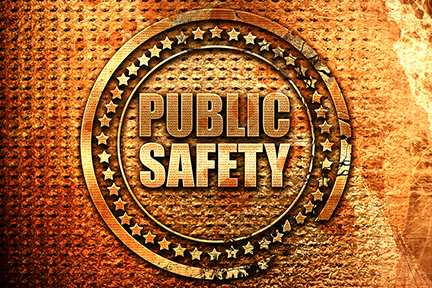
The inevitable truth of working in public safety is that many employees will deal with fatigue, stress, sleep deprivation, and more at one time or another. As departments and agencies across the country face staff shortages, fatigue management has reached a tipping point.
Public safety managers are no stranger to the impact these jobs can have on the human body. Over time, these underlying and often hidden problems turn into chronic stress which can lead to burnout, and worse, detrimental health issues.
Take the Minneapolis Police Department for example. In July 2021, the department’s staffing level reached 669 active officers, 61 below the required minimum and down more than 200 from the year prior. Minneapolis isn’t alone. According to a study of 200 police departments, retirements rose 45% year-over-year while hiring slowed 5%. The result? More overtime, longer hours, and a continuous cycle of fatigue.
As public safety leaders continue to recruit to build up their workforce, it’s critical to also look inward at managing the mental state of current employees. By following a few management techniques and utilizing data to cut down on burnout, leaders can ensure their people are not only in good standing but are also in the best position to serve the public.
Let's talk about some of these strategies and look at how you can implement them for the betterment of public safety professionals.
Addressing Chronic Stress in Public Safety Workers
We should first talk about why chronic stress is a problem. Why are things like police fatigue and overtime scheduling an issue? The simple answer is chronic stress.
All of these little factors like overtime hours, nights on-call, and exposure to stressful situations lead to a build-up of cortisol in the system. Cortisol is the hormone that our bodies release when they’re ready to give the 'fight or flight' response. When this happens consistently over time, cortisol levels stay raised, leading to a whole new set of problems.
Chronic stress can lead to immunodeficiency, high blood pressure, an enlarged heart, and more. Over time, you could be causing irreversible damage to your body. So, while an extra shift here and there isn’t a big deal, constantly picking up extra shifts and working overtime isn't good for the body as a whole.
What does all that mean? High levels of cortisol have been directly linked to ‘burnout,’ which the World Health Organization now recognizes as an ‘occupational phenomenon’ with three characterizations:
- Feelings of energy depletion or exhaustion
- Increased mental distance from a job
- Reduced professional efficacy
When a police officer is dealing with a dangerous situation or a fire fighter is rushing into a burning apartment complex, it’s critical they’re at peak performance. Any hinderance can be harmful to the officer or fire fighter and have negative consequences for the public at large.
Luckily, there are a few ways to address and control these problems.
Reconciling Long Shifts
Most public safety workers you talk to will tell you that their work is rewarding. They get to save lives, help people, and live out jobs they probably dreamed of when they were kids.
However, these jobs also come with all of that during 12-hour shifts. These long work hours can lead to worker fatigue. Over time, that leads to less employee engagement on the job as well as more fatigue in general. Unfortunately, long shifts are a regular part of these kinds of positions. This means that changing the hours may not be the answer.
While some public safety agencies have tried 10-hour shifts, they create overlap in 24-hour scheduling. Meanwhile, despite seemingly providing better work-life balance, 8-hour shifts actually result in more overtime and lower quality of life. According to a study, “officers assigned to 8-hour shifts worked more than five times as much overtime per two-week period (5.75 hours) as officers on 10-hour shifts (0.97 hours), and more than three times as much as those on 12-hour shifts (1.89 hours).” All that is to say the 12-hour system is widely regarded as the best way to manage many public safety positions.
So, instead of changing the hours, leaders can address problems with each scheduled shift.
One solution to cutting down on fatigue is rotating shifts. This scheduling method allows each person on your team to get some rest after they've completed a full shift. This solution isn’t always ideal. Many public safety workers don’t enjoy rotating shifts, which can disrupt circadian rhythm and lead to other adverse health effects. In fact, many health and public safety employees who work on rotating shifts get less sleep.
Better than attempting to reinvent shifts, public safety leaders should put policies in place that help mitigate overtime and outside employment. These procedures can include
- Limiting overtime hours per day, week, and month
- Training employees to identify signs of burnout and fatigue
- Implement mutual aid agreements to avoid extended shifts
- Use scheduling software to manage shift scheduling, overtime, and more
When you're looking at your work schedules, you should make sure that each one of your workers is getting time to rest and recover, especially after demanding shifts. You should also think about adopting a mental health advocacy system. Each public safety professional deserves regular access to mental health professionals and similar services.
In order to properly recover and decompress from the situations they face on a daily basis, public service professionals need to think through the situations they encounter. They also need guidance to combat sleep deprivation, fatigue, and similar conditions that they may encounter.
Monitoring Overtime Scheduling
One of the biggest culprits of stress in the public service industry is overtime and off-duty employment. Picking up additional hours or off-duty shifts can be an appealing way to earn extra income, but the additional hours and wear and tear on the body needs to be monitored.
Police officers in particular have ample opportunity for off-duty employment, also known as secondary employment. These extra-duty jobs can include working at a college football game, at a movie theater or concert, or helping a private business with its event. Agencies can use software to manage the distribution of these extra-duty opportunities and ensure their workforce is staying within hour limits and complying with fatigue rules.
The best way to keep these conditions under control is by tracking your employee overtime. You can do this with employee scheduling software. With this, you can see regular work times and overtime schedules. All of the data you need will be clear and organized. So, there's no guesswork and no estimating. With software, you can not only monitor your workforce, but also give employees flexibility to manage their schedules with:
- Shift swapping
- Schedule Bidding
- Vacation Bidding
- Overtime Request
- Time Off Requests
- Off-Duty Job Requests
You'll know exactly how long and when each team member has been working. From there, you can make more educated decisions about their future schedules and commitments. The implementation of operational workforce management software could completely change the health of all of your sworn personnel by getting to the root of the issue.
Handling Worker Fatigue
A combination of overtime work and chronic stress can lead to chronic worker fatigue. Fatigue is a kind of tiredness that doesn't go away with a full night of rest.
Fatigue takes rest, relaxation, and recovery. Without one of these components, a worker could never recover from their fatigue. Here are some of the symptoms of chronic fatigue that you should look out for in your employees and train supervisors to monitor in their employees:
- Poor memory
- Difficulty concentrating
- A sour mood
- Quick to anger
- Sore throat
- Headaches
- Enlarged lymph nodes
- Muscle pain
- Swollen joints
- Dizziness
- Lightheadedness
- Unwavering sleepiness
- Emotional exhaustion
If you notice any of your workers are exhibiting these kinds of symptoms, you should reach out to them and look at ways to get them back on track and in a healthier state. This could include break time, mental health services, creative activities, and more.
If you're at a loss for helping a staff member, you can ask the individual what kind of support they'd like. They may be able to identify some ways that you can support them.
Invest in Workforce Management Software
There is no exact number of hours that causes someone to reach the tipping point into fatigue and burnout. Every individual and situation is different. While that makes it difficult for public safety leaders to stay on top of the issue, a combination of training and software can help agencies monitor their workforce and enforce limits to keep their people healthy.
If you want to get control of overtime, fatigue, and burnout, investing in operational scheduling software is a great way to go. By taking control and automating your fatigue-rule policies, you'll be able to help your team work smarter. Plus, you'll be contributing to each public safety personnel's health by diminishing life stressors and aiding in more sleep, better coping skills, and other healthy habits.


